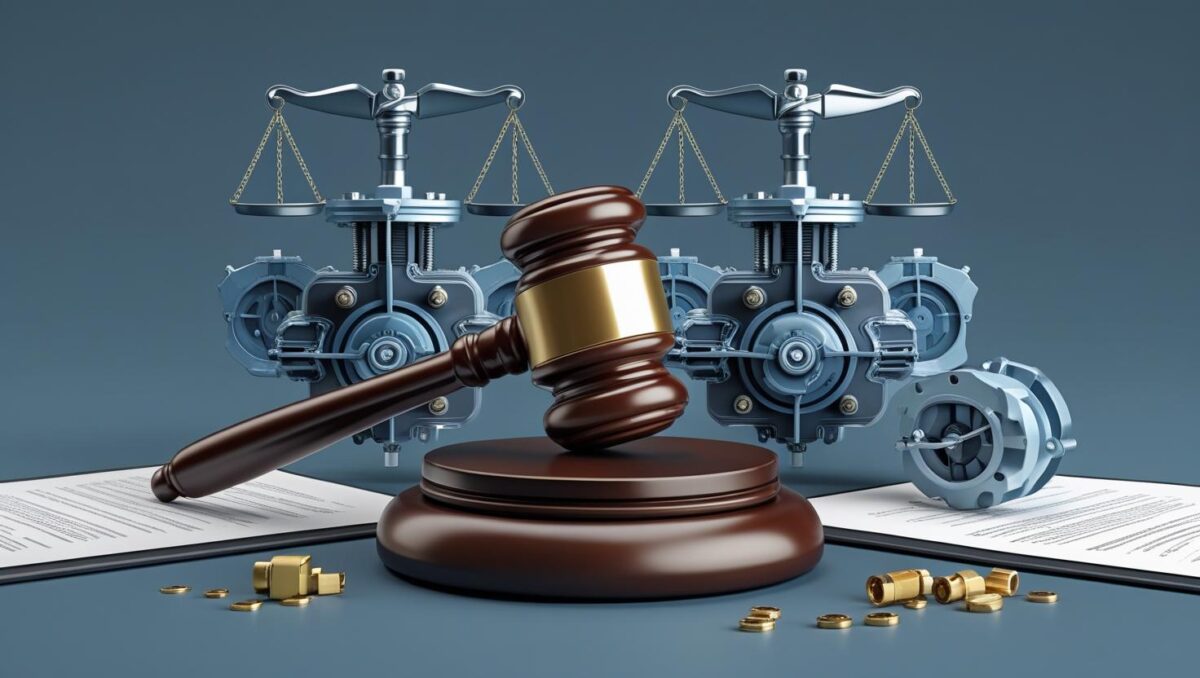Summary
The Delhi High Court issued a patent injunction in favour of Aquestia, restraining Automat from selling its Hydromat valves. The Court found a prima facie case of infringement of Aquestia’s patented valve design.
Background and Facts
The plaintiff, Aquestia Limited (hereinafter “Aquestia”), an Israeli company, owned Indian Patent No. 427050 titled “A Fluid Control Valve”, granted on 27 March 2023. The invention relates to a fluid control valve with an asymmetric sealing diaphragm in which the portion extending over the inlet path has a larger area than that extending over the outlet path, enabling improved performance under low pressure. The defendants, Automat Industries Pvt. Ltd. and affiliates (hereinafter “Automat & others”) marketed irrigation valves under the brand Hydromat.
Issue
The question before the Court was whether Aquestia was entitled to interim relief when Automat & others claimed their impugned product was protected by a separate patent (IN’536) granted in their favour.
Key Arguments
Aquestia argued that the impugned product embodied the asymmetric sealing diaphragm and differential diaphragm surface areas claimed in the suit patent, and that the curved sealing bridge relied upon by Automat & others was immaterial since the suit patent covered both straight and concave embodiments. Automat & others contended that their product was covered by Patent IN’536, which incorporated a curved sealing bridge and symmetrical diaphragm, operated on a different principle, and that an injunction would disrupt important irrigation projects.
Court on Infringement and Defence of Subsequent Patent
The Court observed that the grant of a patent to Automat & others does not constitute a valid defence in an infringement action, reiterating that a patent confers an exclusionary right under Section 48 of the Patents Act, 1970, but not a right to practise the invention. The Court further clarified that infringement must be assessed by comparing the claims of the suit patent with the impugned product, not product-to-product or patent-to-patent. Upon examination, the Court found that the impugned Hydromat valves contained an asymmetric sealing diaphragm in which the inlet portion covered a larger area than the outlet portion, satisfying the novel features of Claim 1 of the suit patent. The Court rejected Automat & others’ reliance on the curved sealing bridge, noting that the suit patent itself contemplated curved or concave embodiments.
Findings and Order
The Court found that Aquestia had established a prima facie case of infringement. It held that balance of convenience lay in favour of Aquestia, whose commercial interests would suffer irreparable harm from the continued sale of the impugned products, and that public interest did not justify denial of relief in this case. Consequently, Automat & others were restrained from manufacturing, selling, distributing, advertising, exporting, or otherwise dealing in any product that infringed the suit patent, and were directed to remove listings of the impugned valves from online and third-party platforms. The Court clarified that these findings were confined to the interim stage and would not prejudice the final outcome of the suit.
Relevant Paragraphs
Paragraphs 13–15: “… The grant of a patent merely confers a negative right under Section 48 of the Patents Act, 1970, to exclude others from making, using, or selling the invention, and does not ipso facto establish that the defendant’s product does not infringe the plaintiff’s patent … For determining infringement, the Court is required to analyse and examine the scope of the suit patent and determine whether the impugned product of the defendant is covered by it.”
Paragraph 20: “In Biswanath Prasad Radhey Shyam v. Hindustan Metal Industries, the Supreme Court has observed that in infringement proceedings, the Complete Specification of the suit patent is sacrosanct and plays an important role in construing Claims of a patent. The same principle has been reemphasized by me in Jay Switches India (P) Ltd. v. Sandhar Technologies Ltd. and Conqueror Innovations (P) Ltd. v. Xiaomi Technology India (P) Ltd. Therefore, for further clarifying the scope of the afore-extracted claim of the suit patent, I proceed to analyse the Complete Specification of the suit patent.”
Paragraphs 27-40: “The defendants’ approach in placing reliance on a ‘product-to-product comparison’ rather than a ‘claim-to-product’ analysis is untenable. The correct approach is to compare the claims of the suit patent with the impugned product…”
Citation:
CS (COMM) 860/2024, I.A. 41112/2024 & I.A. 4591/2025 (https://indiankanoon.org/doc/113756547/)
Article review and accessibility review by: Dr. Neetha Mohan
